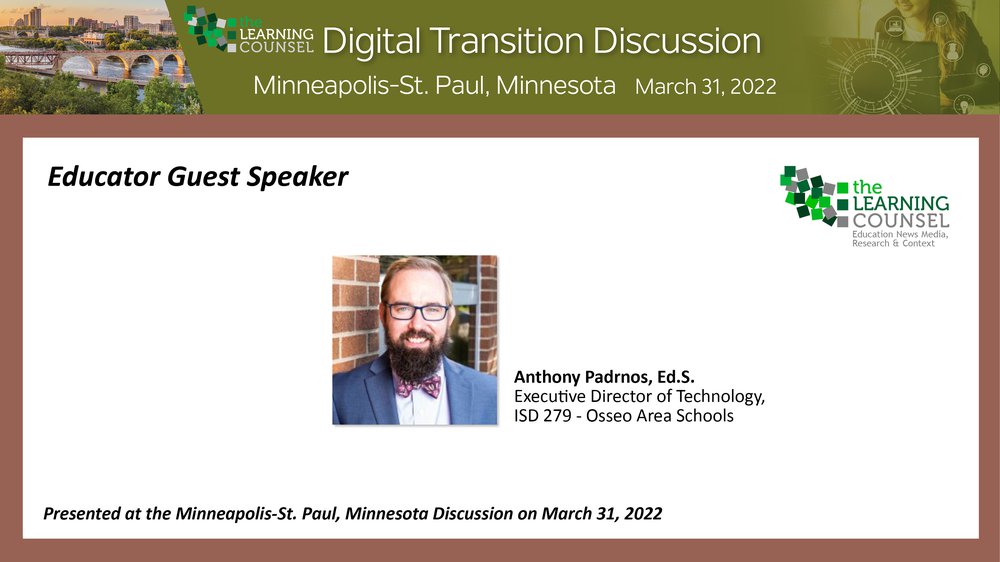In this educator presentation, Anthony Padrnos, Ed.S., the Executive Director of Technology at Osseo Area Schools in Minnesota lends his thoughts to his district’s journey towards personalized learning. The district’s journey has, in essence, been in two parts – pre and post pandemic. Beginning back in 2013, the district began using technology to work towards the goal of real personalized learning. When the pandemic hit, the district was forced to operate in a higher gear, using technology in new and better ways. According to Padrnos, “When the pandemic was coming down and we were coming into the school year, I actually was slightly energized because I'm like, ‘we've just had one of the most monumental opportunities as an entire nation to rethink what we can do constructionally in a school, and how we can define learning.’”
Explaining his philosophy around personalized learning, Padrnos says “Personalized learning for us is really defined around these three tenets, Path, Pace and Place. Thinking about path, how do students have an ability to have a voice and choice in the way that they're learning and engaging with the learning and choosing pathways for their learning?
“How can I present learning where the student is at, and be able to move the learning with the student as they progress? Sometimes that's slower. Sometimes that's more rapid. We continue to struggle and work through the Pace piece. There are structural bounds. As many of us have had conversations on today. But it is a core tenant of how we start to rethink and redesign and create opportunities for our scholars. And then Place, which the pandemic really started to amplify our opportunities around, but that anytime, anywhere learning, we know we have technology solutions and resources that a student can engage anywhere in the world globally with our systems. Our learning, our connect with our teachers, that we're not bound by a physical brick and mortar space anymore. So how do we incorporate that and think about that in the designs that we're creating within our instructional institution?”
As the pandemic arrived in 2020, the conversation became less philosophical and more functional. According to Padrnos, “As we tried to shift out of traditional mindsets with instruction, our team really talked about what the pandemic meant and the challenges that went through it. But the gleaning opportunity we’re still trying to capitalize on, was that it was digital learning immersion for our scholars and for our staff. Staff who may have stepped back and didn't fully engage with all our technology tools and resources before had to jump in and learn and get supports to build a foundational skillset as an entire system of ‘how I can use technology to teach and dip different ways and, and different pathways.’
“We're in this space now, as we're coming out of the pandemic, of trying to see how far we can push while also balancing the reality of the social emotional needs of our staff and the stress that's occurring with that staff. We had some amazing conversations over the course of last summer with leadership teams and groups of teachers. There was a lot of great energized thinking about the possibilities of what could be, because teachers had now experienced it, got a taste of it and could see where it could go.”
You’ll enjoy this amazing journey, in both theory and practice, as Padrnos shares his district’s thoughtful march to personalized learning for their learners. And likely as not, you’ll see more than a few ideas you can add to your own district’s journey as well.










